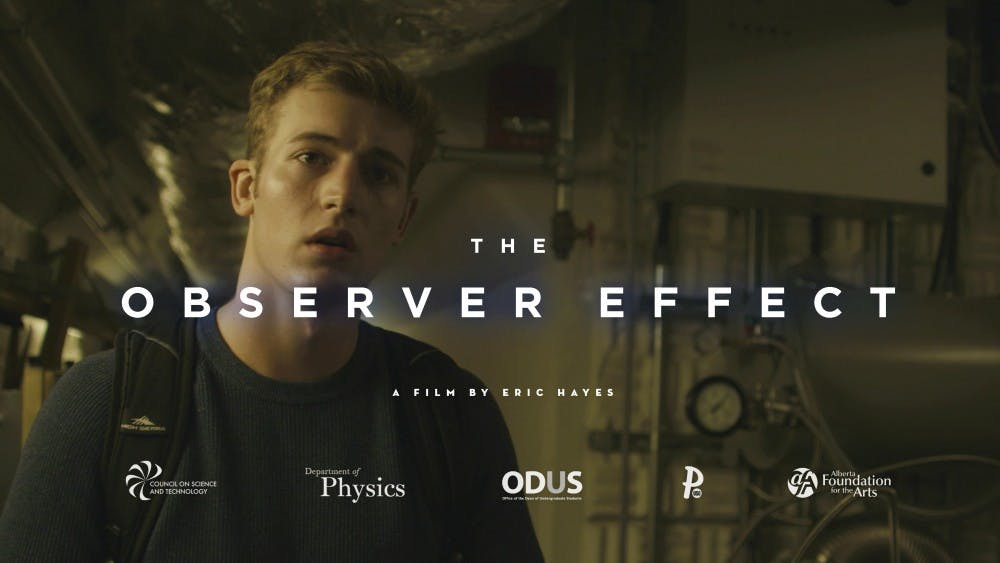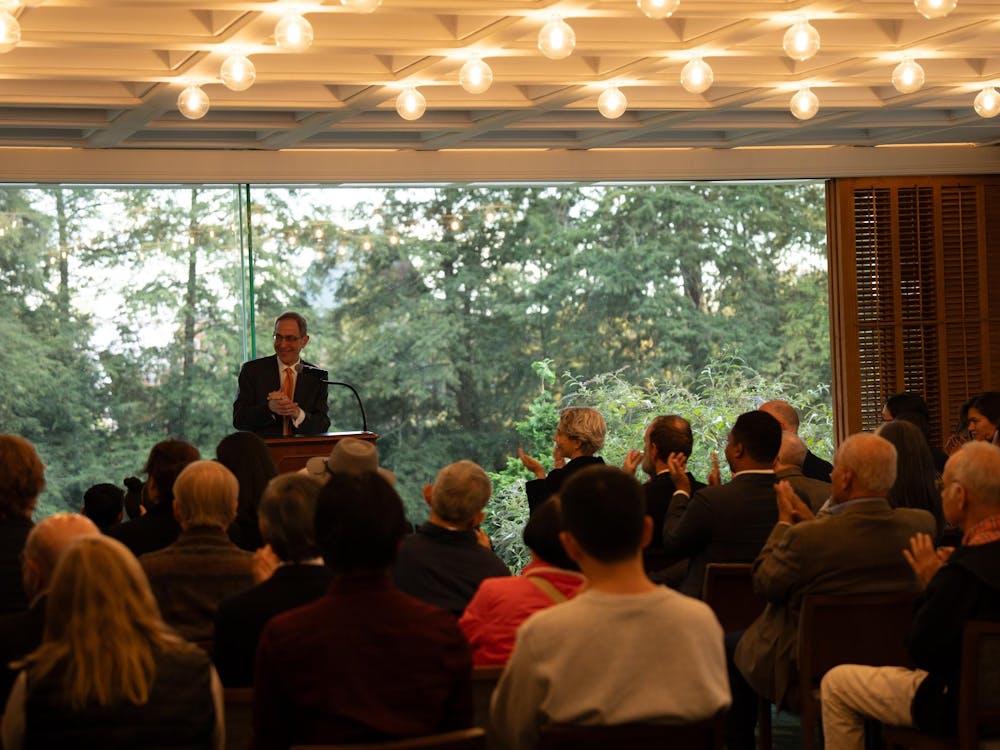Art is participatory. What artists create is an experience for people to look at artwork and imagine themselves to be part of its story. The best works of art are the most convincing in catalyzing their audience’s imagination. Moreover, the process of art-making is also more arduous than we often imagine. This week, the 'Prince' spoke with two student artists on campus who designed their own film projects as an extracurricular passion, in hopes of unveiling the artistic ideals that motivated them and the artistic processes they underwent.
“The Observer Effect,” written and directed by Eric Hayes ’18, premiered on a Friday in May 2016 to a nearly-full house at the Princeton Garden Theatre. A self-taught filmmaker, Hayes has been making films since he was 11 years old. He started with animated projects and has continued by working for small non-profit organizations.
After “many years of trials and errors,” Hayes came to Princeton with the ambition of creating a large-scale project. He wrote the screenplay during the summer after his freshman year and started the arduous process of filming, editing, and re-filming throughout his sophomore year. “I started with one big plan in mind, but took one step at a time,” Haynes said.
Sharon Deng ’17 created her film project, “Paris, Ni Hao” during the summer after her sophomore year. Her passion for filmmaking stems from her broader interest in telling stories of people’s experiences. Since she has been interviewed several times about her film, however, she chose to speak more in our interview about her recent project, an architectural archive of historical movements.

“I want to explore how shapes, forms, and the spaces where we stand and talk can catalyze collective actions,” explained Deng. “The act of walking through an archive can remind us that we are all part of a larger history.” This act informs people of past knowledge that extends into the present, carrying “the possibility to mobilize.”
Both Hayes and Deng were fortunate to get enough funding from the University to carry out their projects. “The Observer Effect” was funded by the Physics Department, Princeton Film Productions, and ODUS, which encourages student-initiated film projects, according to Hayes.
“The university is generous, but this is not a cheap project,” said Hayes. “We want to tell a Princeton story that’s also suitable for a larger audience in theaters outside of Princeton.” To shoot high-quality footage, Hayes and his team had to rent professional camera gear from New York City and carry it back to Princeton by subway. “We were really excited on our first trip, but by the third trip it’s really draining.” Hayes said with a smile. “It’s all worth it, though.”
Deng won the Martin A. Dale ’53 Summer Award to create her documentary, so she didn’t encounter much difficulty in terms of funding. Meanwhile, her current architecture project is still a studio model. Though she envisioned placing it at an abandoned 100- by 100-meter site in Brooklyn, NY, she’s more interested in the conceptual aspects of creating a “mind-space” that “people can enter and walk for 15 minutes in a world they can believe in,” one that “resonates with people on an emotional level, not necessarily practical.”
From an artistic perspective, Deng sees the project as a spatial exercise in how forms evolve, when every wall is made of triangles splitting, attaching, folding and re-attaching, adding and eliminating surfaces. On a deeper level, she liked the idea of people walking into a building ignorant and innocent, and undergoing change in some way when walking up the stairs, informed by the space around them.
“It’s a different process when designing actual, practical buildings,” Deng said. “Your thinking becomes more restricted by rules.” For now, she prefers the freedom to explore ideas with studio projects. Holding onto her vision, she is trying out a variety of different directions in which to take her next step.
Both artists have realized the collaborative nature of creating a project. One of the greatest difficulties Hayes encountered was in fact coordinating schedules; though “there are so many dedicated, talented people” on his team, “getting people together was not easy.”


The cast of The Observer Effect is mostly composed of Princeton students whom Hayes knew from before or got to know very well during his filming process. This project “provides an outlet for a group of people with a hunger to do something film-related but haven’t had the chance to,” said Hayes. Kolb, for example, knew that she wanted to be a composer, and this project allowed her to produce her first original soundtrack.
Deng also talked about her experiences regarding both collaboration and the lack thereof. In her new architectural project, she noted, she is content to be “the sole author of the project,” with “incredible freedom” to pursue “an aesthetic that’s really mine.”
For documentary film, on the other hand, the interpersonal network one creates in the process is key. “The conversations you have with audience members are the film, the characters whom you get to know and who have become part of your life are all very real,” Deng said. “What you have with the movies is what remains after the 40 minutes: what people remember seeing and feeling.” The audience of her film and her architecture are in some ways active participants and collaborators of her projects, as she works to create a space to make them believe in what they remember of the experience.
Hayes is proud that The Observer Effect was the best-selling film at the Garden Theatre until La La Land was released. He has been filming music videos and conducting smaller projects with the Princeton Film Festival since last fall. As a computer science major, he is also busy with his independent work on motion capture. Hayes notes that he has known since a young age that “directing movies is what [he was] made for.”
Deng, on the other hand, is still unsure of her next steps. She doesn’t yet know what exactly she wants to express with forms and shapes, but she knows she loves orchestrating experiences. She sees the city of Paris as a character in her documentary, and she continues to explore how “movie sets or backdrops of a story, such as a building, or the setting of Paris, inform our experience.”
Currently branching into set design and production design with theater groups on campus, Deng wants to explore how real props or sets and their illusions come together to be part of a story, as well as how to create an experience with the interior and the exterior in relation to the human figure.








